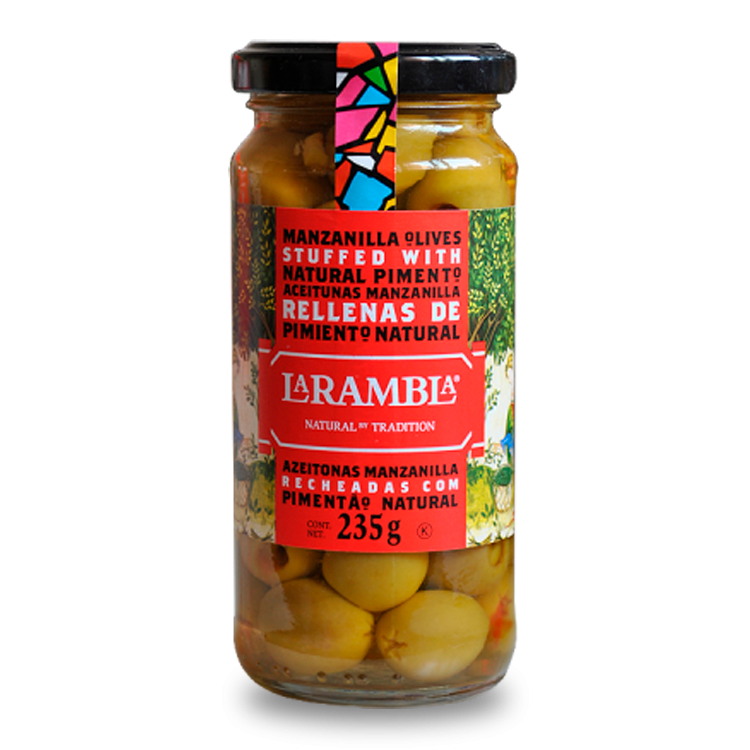Olives
For its qualities and productivity, the Manzanilla is the most renowned and savored table olive in the world. As a fruit that presents an excellent pulp-stono ratio, it is present in the most diverse types of degustation, whether as part of a recipe, or just as an acsompaniment for drinks. LaRambla olives, green and black, are of the fine Manzanilla type, caliber 200/220, as much with the stone as without. The stuffed olives, in turn, are caliber 240/260, may be the largest that exist. The filling consists of red "Piquillo" variety pimento and pieces of anchory.
Natural products, without additives, coloring or artificial aromatcs, and with quality controlled from harvest to bottling.
The green olives are the fruits harvested during the ripening phase, before acquiring their final color and reaching their normal size. aT this moment, the olives are firm, healty and have the capacity to resist light finger pressure without leaving marks in the natural pigmentation.
The coloring of these fruits may vary from green to straw yellow. The black olives are obtained from fruits gathered when mature, when they have lost quite a lot of their water content and green chlorophyll. Their colors may vary: purplish black, violet black, dark violet, greenish black, or dark chestnut brown.
Natural products, without additives, coloring or artificial aromatcs, and with quality controlled from harvest to bottling.
The green olives are the fruits harvested during the ripening phase, before acquiring their final color and reaching their normal size. aT this moment, the olives are firm, healty and have the capacity to resist light finger pressure without leaving marks in the natural pigmentation.
The coloring of these fruits may vary from green to straw yellow. The black olives are obtained from fruits gathered when mature, when they have lost quite a lot of their water content and green chlorophyll. Their colors may vary: purplish black, violet black, dark violet, greenish black, or dark chestnut brown.
Showing 1 to 8 of 8

WHOLE GREEN MANZANILLA
Ref. ACE01
PITTED GREEN MANZANILLA
Ref. ACE07
PITTED GREEN QUEENS OLIVES
Ref. ACE14
ARBEQUINA OLIVES
Ref. ACE06
BLACK PITTED OLIVES
Ref. ACE02
SLICED BLACK OLIVES
Ref. ACE15
Showing 1 to 8 of 8



